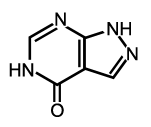A 73-year-old man presents with a two-month history of increasing redness and scaliness of skin, which involves virtually his entire integument. The patient has type 2 diabetes mellitus, but otherwise is in relatively good health. Currently, he is not on medications and has no prior history of cutaneous disease.
On examination there is generalized erythema with variable white scale over the trunk (figure). The process prominently involves the scalp, palms, and soles.
[FIGURE OMITTED]
Differential diagnosis
Consider conditions that produce generalized exfoliative erythroderma.
Psoriasis or other pre-existing dermatoses (eg, atopic dermatitis, seborrheic dermatitis, lichen planus, pityriasis rubra pilaris, pemphigus foliaceous) can become generalized and lose morphologic characteristics of the original process. One of these conditions may present for the first time with an erythroderma.
Drug hypersensitivity reaction can produce a total body erythroderma identical to this case. Drugs that can produce an erythroderma include amoxicillin, sulfonamides, and allopurinol. The patient is not on any conventional medications, but herbal remedies and other supplements (eg, foods tainted with mercury) may produce such a reaction. This patient was not on any herbal or other types of food supplements.
Cutaneous T-cell lymphomas, such as mycosis fungoides, can either eventuate as an erythroderma or may present with this eruption. Associated lymphadenopathy would be an important clue if it were present.
Exfoliative erythroderma of unknown cause is the diagnosis. A physician would arrive at this conclusion after a diagnostic workup fails to implicate an underlying reason for this eruption. This workup should include a careful history, looking for recent use of medications, a past history of other skin diseases--even in the distant past, and a diagnostic skin biopsy, which fails to show the histologic changes of T-cell lymphoma. Unfortunately, the biopsy will not usually separate the various benign dermatoses, which may evolve into an erythroderma.
The workup in this patient was non-diagnostic. He is being treated with systemic corticosteroids, which control the problem.
Diagnostic pearl
The three main causes of an exfoliative erythroderma are flare of an underlying dermatosis, drug eruption, and cutaneous T-cell lymphoma.
Dr. Levine is professor of medicine (dermatology), University of Arizona Health Sciences Center, Tucson.
COPYRIGHT 2005 Advanstar Communications, Inc.
COPYRIGHT 2005 Gale Group



